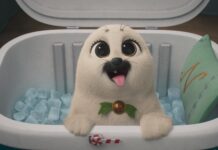This post contains affiliate links and our team will be compensated if you make a purchase after clicking on the links.
 Generally, 3D movies nowadays make an unreasonable use of the third dimension. A character’s nose might stick out at the audience, or an onscreen projectile will land in the lap of someone a few rows ahead. But a few movie studios have just started to understand that the third dimension doesn’t need to be a cheap gimmick and that it can be used to enhance storytelling and bring moviegoers into the screen. Pixar is one of those studios.
Generally, 3D movies nowadays make an unreasonable use of the third dimension. A character’s nose might stick out at the audience, or an onscreen projectile will land in the lap of someone a few rows ahead. But a few movie studios have just started to understand that the third dimension doesn’t need to be a cheap gimmick and that it can be used to enhance storytelling and bring moviegoers into the screen. Pixar is one of those studios.
Pixar Animation Studios has a clear philosophy on 3D: “When we approach 3D, we often think of what we call the three C’s,” says Bob Whitehill, stereoscopic supervisor for “Finding Nemo 3D.” “First off, we want to make it comfortable, so it’s easy to watch. Secondly, we want to make it consistent with the original vision of the film – so if Nemo is meant to feel trapped in a small space in the tank in the dentist’s office, we need to make it feel small in 3D, too. Thirdly, we want to make it captivating. We want to bring a new world to the audience. If they’ve gone out of their way to see ‘Finding Nemo’ in 3D, we want to make it more immersive than ever and pull them into this world in a new and different way.”
(Bonus Clip: “Lesson in Flashbacks – Extended”)
With this philosophy in mind, the 3D team set out to shoot each scene again taking into account the presence of a new dimension. While remaking a film that was entirely created on a computer is an incredible advantage, it doesn’t come without its challenges. Assets, for those that are not familiar, are the various 3D models, objects, lighting, camera and animation data that make up a scene. This information first had to be copied from its archived location in order to preserve the original film, and then converted for use with modern computer animation programs. Because the conversion process does not always flawlessly reconstruct ten year old assets, the team then had to triage each scene frame by frame for inconsistencies between the original and the new.
(Finding Nemo “Alternate Opening”)
It is at this point that the long process of rendering then takes place producing the finished product. You feel like you can reach out and touch the fish swimming by. Seeing it in 3D just heightens that connection to the environment and makes it more powerful.
Through it all runs a deep current of emotion that has made Finding Nemo one of Pixar’s most successful features. This 3D release will only add to its appeal; Marlin and Dory’s odyssey through the watery depths is made even more immersive by this marriage of subtle artistry and technical skill.














